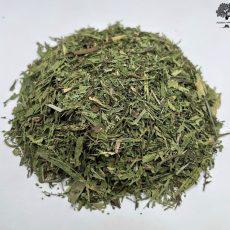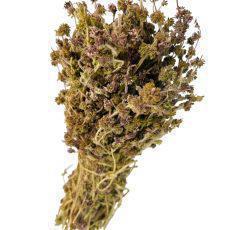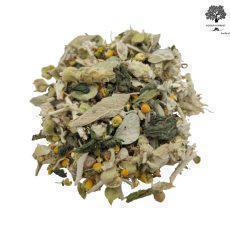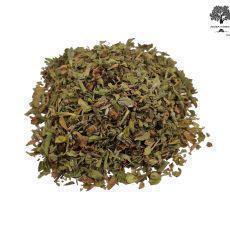Description
Greek Rosemary Leaves of Premium Quality
Scientific name: Rosmarinus officinalis
Family: Labiatate
Harvest : June 2023
Expiration Date: Provided on the bag
Other Names: Rosemary, Lebanon Tree, Diomarine, Lemongrass, Arismarum, Dushmary, Lemongrass, Lebanese
DESCRIPTION
Perennial evergreen shrub reaching up to one and a half meters high. Its leaves are acuminate
narrow dark green and its flowers slightly light blue-purple.
NATURAL ENVIRONMENT & CULTIVATION
Rosemary is native to southern Europe and is cultivated as an ornamental worldwide. Propagate with seeds
but more easily with cuttings. It prefers warm, dry climates. It easily withstands up to -10 degrees Celsius
and is resistant to heat and wind.
USEFUL PARTS
In herbal medicine ,are used the leaves and flower parts that are collected mainly during the summer months.
COMPONENTS
Volatile oil, flavonoids, tannins, rosmarinic acid, rosemary, deuterpenes.
HISTORY & TRADITION
According to folklore, it was named after the Virgin Mary, who left her mantle on the bush. By the next morning,
the bush flowers had turned blue and had since been named rose of Mary.
The ancient Greeks considered it a gift from Aphrodite. Students wore rosemary wreaths when exams,
because it helped with concentration and memory.
Rosemary was once used as a frankincense so it was also called a fir tree.
It is said that rosemary, cedar and parvinint decoction was a youth elixir, called the water of the queen of Hungary.
In the hospitals old rosemary was burned to disinfect the air.
THERAPEUTIC ACTIVITIES & USES
It can be used to give flavor on cooking end especially on meats.
Moreover, rosemary is warming and stimulates blood circulation to the brain and improves concentration and memory.
It is useful for nervous headaches and migraines.
Enhances hair growth by boosting blood circulation to the scalp. Rosemary leaves, along with nettle roots and pepper roots,
soaked in alcohol, help induce hair growth by twisting the scalp.
It boosts mood and is useful in cases of mild to moderate severe depression.
Baths made with rosemary decoction help those who suffer from rheumatoid arthritis.
It is expectorant and helps cough in bronchitis and influenza.
The powder from the powdered rosemary leaves heals the wounds.
Rosemary’s decoction is also against fainting and dizziness.
Crushed fresh rosemary making the puddle dry the hemorrhoids.
It helps with fatigue and weakness.
Boiled rosemary with wine helps sleep.
It is generally considered to be antibacterial, antifungal and anti-rheumatic, a stimulant to the heart and vision but also to diabetes.
Preparing tea
Add a spoon of the rosemary leaves in boiling water for 4 – 6 minutes. After that, leave undercover for 5 minutes more.
Drink 2 times a day.
Add honey or lemon juice.
After 15 days you can stop for one week.








